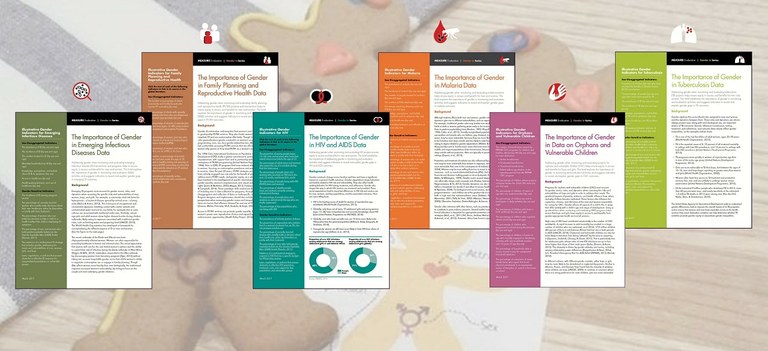Gender In Series

Gender is in family planning, infectious diseases, malaria, HIV/AIDS and other health issues. That means it’s always important to include gender sensitivity in planning or measuring any health program.
The demand for specific data and indicators incorporating a gender perspective has moved beyond advocates of the rights of women and key populations to include decision makers at every level and in every area of social and economic development. And while there is greater general awareness of the need for a gender perspective in health policy and programming, not all health areas have considered gender implications equally.
Gender constructs have a significant impact on a person’s health outcomes. Gender expectations shape behaviors and beliefs related to risk and vulnerability. They also affect such health-seeking behavior as testing and treatment adherence. Gender even shapes the way in which health services are structured and provided. These social expectations lead to important differences in risk and service use for men, women, and key populations. For example:
- Unequal power relationships increase women’s vulnerability to HIV by limiting their ability to negotiate sexual relationships and condom use.
- Tuberculosis progresses more quickly in women of reproductive age than men of the same age group.
- Women may be more willing than men to invest in malaria-prevention measures—such as insecticide-treated bed nets (ITN)—but may lack the financial power to do so.
- Men are often excluded from family planning and reproductive health (FP/RH) services or FP/RH information systems that are tailored for women.
- Most caregivers of orphaned and vulnerable children (OVC) are female; boys may not be acquainted with positive role models whom they can emulate.
- Efforts to contain and respond to emerging infectious diseases often divert resources away from routine health services, disproportionately impacting women who seek contraceptives, or maternal health and postnatal care.
Addressing gender when monitoring and evaluating health projects helps ensure equity in access and benefits for men and women. MEASURE Evaluation’s Gender In Series explores the implications of gender on various technical area data and suggest indicators to reveal and explain gender gaps in health outcomes.
Related Content
The Importance of Gender in HIV Health Information Systems
The Importance of Gender in HIV and AIDS Data
The Importance of Gender in Tuberculosis Data
The Importance of Gender in Malaria Data (Available in French)
The Importance of Gender in Family Planning and Reproductive Health Data
The Importance of Gender in Data on Orphans and Vulnerable Children
The Importance of Gender in Emerging Infectious Diseases Data












